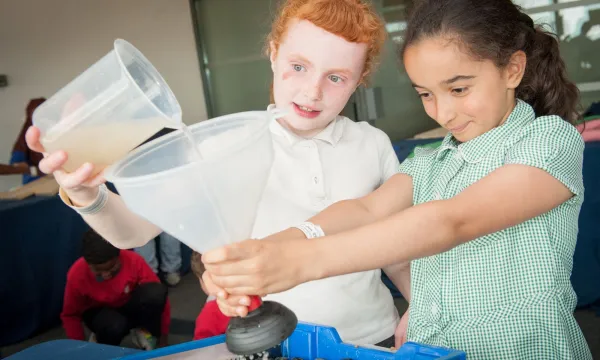
Water Cycle
Students use heat and ice to create their own model water cycle in our laboratory and test the purity of the rain they produce.
Recommended for: KS2 (7-11) | KS3 (11-14)
Wheelchair access limited
Workshop

Students use heat and ice to create their own model water cycle in our laboratory and test the purity of the rain they produce.
Wheelchair access limited
Workshop